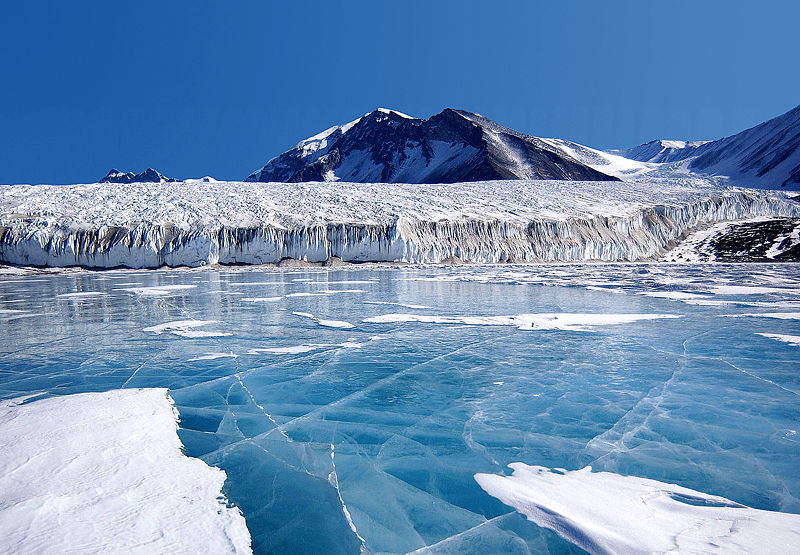 |
| A lake on the Perito Moreno Glacier, Argentina illustrates Campbell's theory nicely |
The pre-Cambrian disasters culminated in the Snowball Earth. While its causes are still unclear, we know that 800 million years ago the Earth began to cool down. Vast ice sheets marched from the poles, encircling our planet all the way up to the equator. This frozen, sub-zero world was one of the most hostile environments that life would ever endure, lasting over 100 million years. The miracle that makes our planet unique was brought to its knees.
Scientists are unsure as to how life survived on the ice-locked Earth. However a new theory based around the atmospheric conditions of the time suggest that small, isolated pockets of water could have existed which would have provided a safe haven for algae and bacteria. 'Under those frigid conditions, there are not a lot of places where you would expect liquid water and light to occur in the same area and you need both of those things for photosynthetic algae to survive' said Adam Campbell, a doctoral student at the University Of Washington.
Campbell used the Red Sea as a model for his research. By applying simple laws of physics and the atmospheric conditions of the time, he found that a long, narrow body of water, about 6.5 times longer than it is wide, would have acted like a wall, providing enough physical resistance to the advancing ice sheets to keep an area of liquid water open to the sun. 'The initial results have shown pretty well that these kinds of channels could remain relatively free of thick glacial ice during a Snowball Earth event' said Campbell.
As we have fossils of photosynthetic bacteria which date to just before and just after the ice age, it is almost impossible that life re-evolved. Instead it would have survived in these warm oases in a desert of ice. When glacial ice is examined under a microscope, bacteria will be present, despite being locked away from bright sun and a regular supply of nutrients by the ice.
The theory also makes sense in relation to evolution after the ice age. If life had to evolve from very primitive bacteria trapped in ice, it is unlikely that complex organisms such as the Ediacara biota evolved soon after. It makes more sense if they evolved from complex bacteria which had survived in warm lakes and pools in the ice.